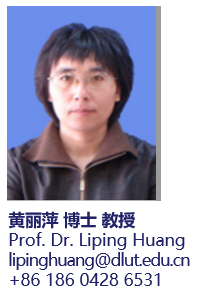
适应国家对资源环境和清洁能源的战略需求,以国际科学前沿为导向,结合环境领域研究热点和难点,环境生物电化学与清洁能源技术研究组开展了环境电化学、环境微生物、电极材料、清洁能源技术交叉的基础理论及应用研 究。近年来承担国家自然科学基金面上项目 4 项,教育部博 士学科点基金 - 博导类 1 项,中丹科技合作项目 1 项;发 表论文 100 余篇,其中 SCI 收录 80 余篇,获 2011 年“中 国百篇最具影响国际学术论文”;获省部级自然科学贰等 奖 1 项;参与编写专著和译著 3 部;授权发明专利 6 件。与美国、英国、丹麦、澳大利亚、韩国、日本、中国香港等科研 机构开展了广泛的合作与交流。主要研究方向包括 (1) 生 物电化学系统 - 微生物燃料电池与微生物电解池;(2) 新 型电极材料的制备、表征及应用;(3) 废弃物生物资源化与能源化。
With the exciting intersection of globally and nationally demanded resource, environment and clean energy, research activities in this group mainly covered microbial fuel cells and microbial electrolysis cells; novel bioelectrochemical systems; bioenergy and biomaterials from wastes; preparation, assessment and application of electrode materials. Extensive international collaborations with countries like United State of America, Britain, Denmark, Australia and Korea have been established. Project funds include National Natural Science Foundation, Specialized Research Fund for the Doctoral Program of Higher Education, China-Denmark bilateral collaborative project, and so forth. More than 100 papers and 3 invited book chapters involved have been published in addition to 6 authorized patents.
代表论文
1. Huang, L. P.; Chai, X.; Chen, G. H.; Logan, E. B. Effect of set potential on hexavalent chromium reduction and electricity generation from biocathode microbial fuel cells. Environ. Sci. Technol. 2011, 45, 5025−5031.
2. Huang, L. P.; Gan, L. L.; Wang, N.; Quan, X.; Logan, B. E.; Chen, G. H. Mineralization of pentachlorophenol with enhanced degradation and power generation from air cathode microbial fuel cells. Biotechnol. Bioeng. 2012, 109, 2211−2221.
3. Huang, L. P.; Guo, R.; Jiang, L. J.; Quan, X.; Sun, Y. L.; Chen, G. H. Cobalt leaching from lithium cobalt oxide in microbial electrolysis cells. Chem. Eng. J. 2013, 220, 72− 80.
4. Huang, L. P.; Wang, Q.; Quan, X.; Liu, Y. X.; Chen, G. H. Bioanodes/biocathodes formed at optimal potentials enhance subsequent pentachlorophenol degradation and power generation from microbial fuel cells. Bioelectrochemistry 2013, 94, 13−22.
5. Huang, L. P.; Yao, B. L.; Wu, D.; Quan, X. Complete cobalt recovery from lithium cobalt oxide in self-driven microbial fuel cell-microbial electrolysis cell systems. J. Power Sources 2014, 259, 54−64.
6. Huang, L. P.; Jiang, L. J.; Wang, Q.; Quan, X.; Yang, J. H.; Chen, L. J. Cobalt recovery with simultaneous methane and acetate production in biocathode microbial electrolysis cells. Chem. Eng. J. 2014, 253, 281−290.
7. Huang, L. P.; Wang, Q.; Jiang, L. J.; Zhou, P.; Quan, X.;Logan, B. E. Adaptively evolving bacterial communities for complete and selective reduction of Cr(VI), Cu(II) and Cd(II) in biocathode bioelectrochemical systems. Environ. Sci. Technol. 2015, 49, 9914−9924.
8. Zhang, Y.; Yu, L. H.; Wu, D.; Huang, L. P.; Zhou, P.; Quan, X.; Chen, G. H. Dependency of simultaneous Cr (VI), Cu(II) and Cd(II) reduction on the cathodes of microbial electrolysis cells self-driven by microbial fuel cells. J. Power Sources 2015, 273, 1103−1113.
9. Wu, D.; Huang, L. P.; Quan, X.; Li Puma, G. Electricity generation and bivalent copper reduction as a function of operation time and cathode electrode material in microbial fuel cells. J. Power Sources 2016, 307, 705− 714.
10.Shen, J.; Huang, L. P.; Zhou, P.; Quan, X.; Li Puma, G. Correlation between circuital current, Cu(II) reduction and cellular electron transfer in EAB isolated from Cu (II)-reduced biocathodes of microbial fuel cells. Bioelectrochemistry 2017, 114, 1−7.
11.Tao, Y.; Xue, H.; Huang, L. P.; Zhou, P.; Yang, W.; Quan, X.; Yuan, J. Fluorescent probe based subcellular distribution of Cu(II) ions in living electrotrophs isolated from Cu(II)-reduced biocathodes of microbial fuel cells. Bioresour. Technol. 2017, 225, 316−325.
12.Xue, H.; Zhou, P.; Huang, L. P.; Quan, X.; Yuan, J. X. Cathodic Cr(VI) reduction by electrochemically active bacteria sensed by fluorescent probe. Sensor Actuat. B-Chem. 2017, 243, 303−310.